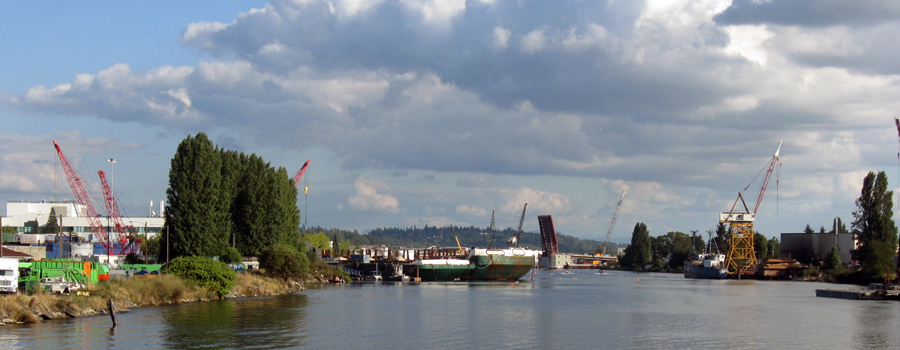Tracing and controlling pollution sources

King County’s Lower Duwamish Waterway Source Control Implementation Plan
The Lower Duwamish Waterway Source Control Implementation Plan builds on over 50 years of investments made by King County to clean up the Duwamish River. The plan documents ongoing and priority source control actions and programs, and the County’s coordinated source control efforts with external partners in support of LDW Superfund sediment cleanup.
The plan offers information on the County’s continued commitment in the following areas:
- Regulating and monitoring Duwamish area businesses that send wastewater to the County sewer system
- Protecting Our Waters - King County’s long-term plan to control combined sewer overflows (CSOs)
- Managing and implementing the County’s Phase I Municipal Stormwater permit, and compliance with water and air quality permits and regulations at County facilities
- Scientific assessments of pollution sources, including sampling, source tracing and system mapping
The plan was developed following a series of studies to help identify source contributions throughout the entire Duwamish-Green watershed. The studies included:
- Chemical characterization of the County’s CSOs
- Chemical characterization of atmospheric deposition, water, sediment and suspended sediments in the Green watershed
- Specific studies targeting certain basins or problem chemicals
View source control implementation plan, reports and studies on the library page.
Reducing CSO volumes
In older parts of Seattle, pipes designed to carry both sewage and stormwater fill to capacity during heavy rain and must be released into a local waterbody to prevent them from backing up into streets, homes and businesses. While CSOs are about 90 percent stormwater, uncontrolled CSOs can contribute to degraded water quality and public health risks. Since 1990, King County has reduced CSO volumes in the Lower Duwamish Waterway by more than 90 percent. With five of 10 Lower Duwamish CSOs controlled as of 2007, King County's CSO program is now focusing on the remaining Duwamish CSOs, with planning targeting the beginning of major work in 2012. King County's current CSO Control Plan will invest $500 million to control remaining Lower Duwamish CSOs by 2030.
Selected King County studies and research
King County monitors existing conditions of the Duwamish River and Elliott Bay both with CSOs and the conditions of those water bodies if CSOs were eliminated. The original study was conducted in 1999. An updated assessment was completed in 2017. These studies help identify the most significant issues and focus source control efforts.
Other source control efforts include:
- King County Industrial Waste Program (KCIW) – KCIW administers regulations to make sure the wastewater generated by industries is treated properly. Many industries must pretreat wastewater before sending it to the sewer. This protects the wastewater treatment process, workers, facilities, and water quality.
- Hazardous Waste Management Program in King County – The County and its local partners have created the nation’s first program targeting consumer products a source of toxic chemicals. Additionally, the program’s Business Services Team conduct no-cost, in-person consultations and provide financial incentives to help businesses handle hazardous waste, prevent pollution, and keep workers safe.
- Business inspections – As part of the Washington State Department of Ecology’s Urban Waters Initiative, King County partnered to conduct more than 1000 business inspections to reduce pollution entering the waterway. These inspections are now complete.
- Source Control Work Group – As a member of the interagency Source Control Work Group headed by the Washington State Department of Ecology, King County contributes to new contaminant studies and source control initiatives affecting the Lower Duwamish, and shares their findings with community stakeholders.

 Translate
Translate